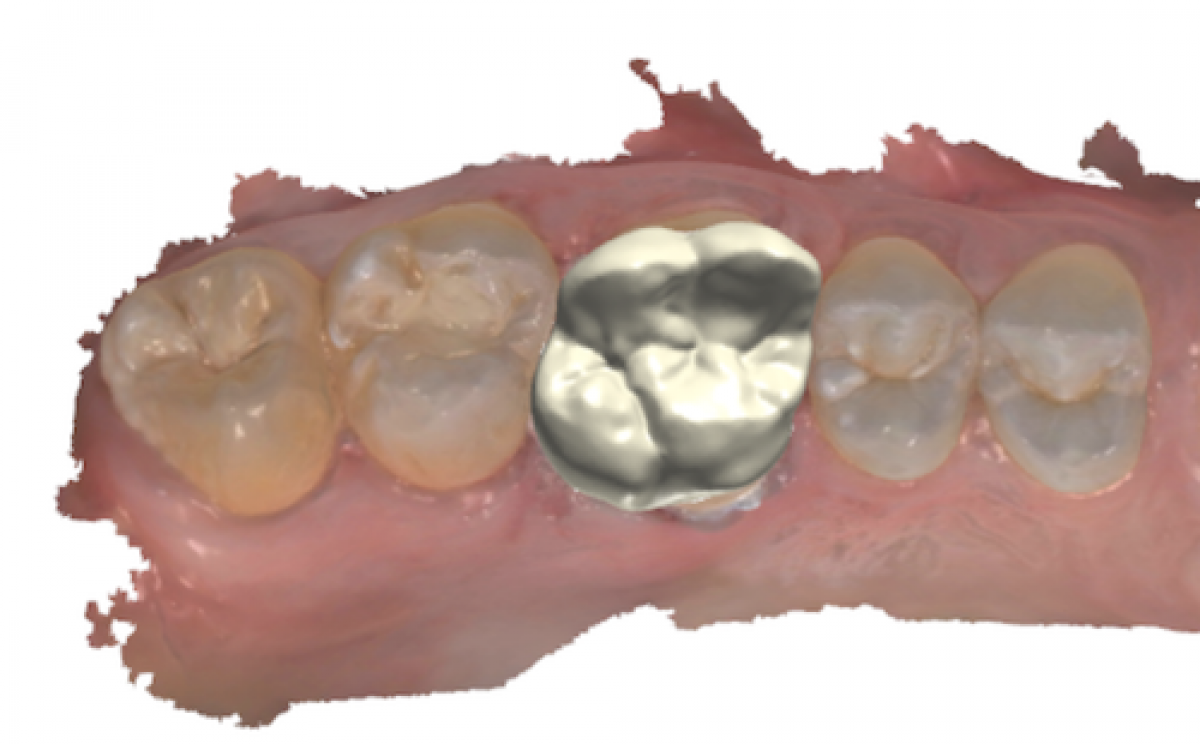
AUTOMATIC OCCLUSAL ANATOMY COMPARED TO DENTAL TECHNICIAN’S DIGITAL ANATOMY OF MONOLITHIC ZIRCONIA CROWNS
Co-authors: A. Comba, F. Del Bianco
Lorenzo Breschi
In recent years, cad-cam technologies were introduced in dentistry in order to improve accuracy and reduce operative time and production costs of prosthetic restorations.
Cad-Cam software are based on standard libraries and often require several time consuming adjustments by the dental technician, during crown design, and by the dental clinician during the cementation appointment. To overcome the problem, the correlation technique was proposed to design the occlusal surface of a crown by replicating the anatomy of the original tooth thanks to a preliminary intraoral scan, thus avoiding library based cad-cam projects. This technique could also be employed for duplicating the occlusal surface of the provisional prosthesis to the definitive one.
In this context, Di Fiore et al. conduct a controlled clinical trial to compare the static and dynamic contacts (SDC) of monolithic zirconia crowns designed by using library technique compared to correlation techniques applied on provisional crowns.
Material & Methods
Di Fiore et al. included twenty-four patients in the study for a total of 28 molars. The authors fabricated an interim crown for each abutment tooth and collected two digital scans , with and without the interim crown in place. Two single crowns were designed using the correlation and the library techniques. After that fifty-six monolithic zirconia crowns were milled and evaluated intraorally for SDC using a 24-μm-thick blue articulating foil by the researchers. Photographs were also taken of to calculate the SDC area using a software (ImageJ).
Results
The results collected by the authors showed that the average and standard deviation (SD) of area of the occlusal marks of the interim crowns was 32.27 ± 3.45 mm2 while that of the definitive crowns designed by using the correlation technique was 31.01 ± 3.73 mm2 and that of the library technique was 36.85 ± 5.78 mm2.
Di Fiore et al found a significant difference between the areas of occlusal marks of the interim and definitive crowns designed by using the library technique, and between the areas of occlusal marks of definitive crowns designed by using the correlation and library techniques (p < 0.001).
Conclusion
The authors of the present study concluded that the average area of the SDC of monolithic zirconia crowns designed by using the correlation technique was similar to that of interim crowns. Moreover, the library technique resulted to be less effective when replicating the SDC compared to the correlation technique.
(Photocredit: Dott. Federico Del Bianco)
For additional information: Automatic Digital Design of the Occlusal Anatomy of Monolithic Zirconia Crowns Compared to Dental Technicians’ Digital Waxing: A Controlled Clinical Trial.
 Related articles
Related articles
Digital Dentistry 11 June 2023
Dental erosion and ultrathin CAD-CAM glass-ceramic and composite resin occlusal veneers
By Lorenzo Breschi and Diego D’Urso
Thanks to modern technology, an alternative to traditional onlays and complete coverage crowns for dental erosion exists in ultrathin bonded posterior occlusal veneers.
Digital Dentistry 02 April 2023
A digital workflow for perio analysis and crown lengthening: a case report
By Lorenzo Breschi and Diego D’Urso
Coachman et al. have presented a case report of surgical crown lengthening in an esthetic region to describe how a digital workflow can improve diagnosis, treatment outcome and follow-up.
Laborie et al. conducted a systematic review to compare the wear resistance of resin-ceramic materials with other resin-ceramic materials and lithium disilicate reinforced ceramics.
Pediatric dentistry 25 February 2023
Digital restorative workflows for developmental dental defects in young patients
The authors describe digitally supported treatment approaches for managing treatment of developmental dental defects in the early permanent dentition.
Prosthodontics 27 November 2022
A close marginal gap and accurate fit between the tooth and the restoration are important for the long-term success of fixed dental protheses.
 Read more
Read more
Editorials 10 October 2025
With proud smiles and crisp white coats, ninety-three learners from the DDS Class of 2029 and the International Dentist Pathway Class of 2028 marked the start of their dental careers at the UCSF...
Periodontology 10 October 2025
Continuous professional development (CPD) in Periodontology refers to the overall framework of opportunities that facilitate a life-long learning practice, driven by the learner-practitioner and...
TheraBreath, the #1 alcohol-free mouthwash brand in the U.S.*, has introduced a new line of dentist-formulated, clinically tested toothpastes designed to support professional oral care...
News 10 October 2025
New officers and trustees were installed at the Minnesota Dental Association’s Leadership Conference on September 19 in Minneapolis.
News 10 October 2025
Smartee Denti-Technology today announced that Professor Gang Shen, its Chief Scientist and Executive President of TaiKang ByBo Dental, has once again been named to the World’s Top 2% Scientists...















